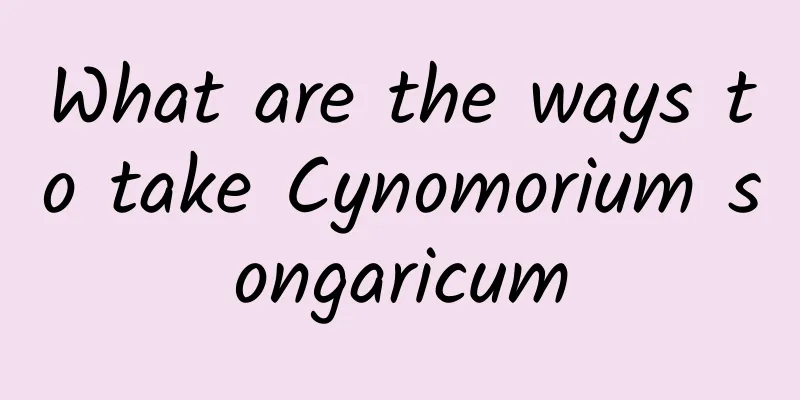The efficacy and function of parsnip

|
Parsnips are a medicinal herb that can treat many diseases. If consumed scientifically and healthily, they can have great benefits for our health and disease treatment. Now let’s take a closer look at the effects and eating methods of parsnips. [Other names] Fallen horse clothes, false perilla, horse clothes leaves (Essentials of Raw Medicinal Herbs), rare perilla, wild windbreak (Records of Lingnan Herbal Medicine Collection), four-sided stem, stinky grass (Guangxi Chinese Veterinary Medicinal Plants), stinky sophora head, duck mites (Luchuan Materia Medica), dirty grass (Nanning City Pharmacopoeia), large bamboo grass, big sheep Gu Sao (Guangxi Chinese Materia Medica), Paifengcao (Guangzhou Army's "Handbook of Commonly Used Chinese Herbal Medicines"), stinky sophora (Fujian Chinese Herbal Medicines). [Source] It is the whole herb of the grass caraway plant of the Lamiaceae family. Cut the whole herb in summer and autumn, wash it, and use it dry or fresh. [Original morphology] One to two year old erect herb, branched, 1 to 2 meters high, covered with pubescence. The stem has 4 edges. The leaves are simple, opposite, broadly ovate to ovate, 4-10 cm long, 3-5 cm wide, gradually pointed or mucronate at the apex, with irregular teeth on the margin, nearly rounded base, pubescent on both sides, and with small glandular dots; the petiole is 1.5-3 cm long. Flowers are arranged in whorls, axillary in the lower part, and can be arranged to the top in the upper part to form long racemes, densely grown or intermittent, with a diameter of 2.5 cm; calyx is light green, tubular, 7-8 mm long, and 5-lobed; the lobes are triangular-lanceolate, with short hairs on the inside and outside; the corolla is tubular, 1.5 cm long, pink, 2-lipped, 5-lobed, the upper lip is erect, entire, the lower lip is broad, expanded, and has short hairs on the inside; there are 4 stamens, which are prominent, and the anthers are attached. The longer pair is 1-chambered, and the shorter pair is 2-chambered, longitudinally fissured; there is 1 pistil, and the stigma is 2-lobed. There are 4 small nuts, which are round, dark brown and smooth. Flowering period is from September to October. The fruiting period is from December to January of the following year. [Habitat distribution] Grown in wasteland, wilderness, and grass near villages. Distributed in Guangdong, Guangxi, Yunnan, Guizhou and other places. Produced in Guangdong, Guangxi and other places. [Properties] The whole plant is dried, 1 to 1.5 meters long. The stem is herbaceous, quadrangular, and up to 5 mm thick. The surface is brown or reddish brown, covered with hair, especially at the corners; it is hard, fibrous in cross section, and has white pith in the center. The leaves are mostly wrinkled, with serrated edges, gray-brown above and gray-green below, hairy on both sides, brittle and easy to break. Sometimes a densely hairy inflorescence can be seen, with most of the flowers falling off, leaving only the gray-green calyx, which often contains 1 to 4 small nuts. It has a faint smell and a light, slightly bitter taste. The best ones are those with many leaves, dryness and no impurities. [Chemical composition] The whole plant contains bioalkaloids, flavonoids, phenols, reducing sugars and tannins. 【Nature and flavor】Acrimonious, warm. 【Functions and indications】Dispel wind, remove dampness and detoxify. Treat colds, fever, vomiting, abdominal pain, muscle and bone pain, sores, eczema, and hemorrhoids. [Usage and Dosage] For oral administration: boil into soup, 3 to 5 qian; soak in wine or make into pills. For external use: decoct in water for washing or mash for application. [Additional prescription] ① Treat pain in all joints and bones: steam Siegesbeckia scoparia and dry it nine times before drying, mix with honey to make pills for oral administration. (Records of Collecting Medicinal Herbs in Lingnan) 【Excerpt】 《*Dictionary》 After understanding some of the effects and common knowledge of parsnips, I hope everyone can use scientific methods when eating it to make it play a greater role. |
<<: The efficacy and function of barnyard grass seedlings
>>: The efficacy and function of Artemisia grandiflora
Recommend
The efficacy and function of Mustang
The effects and functions of Ye Ma Zhui can clear...
China's No. 1 Canal! The wisdom of water management in the style of "growing vines and forming melons"
Long Channel Also known as Baiqiqu and Xunchenqu ...
What are the medicinal properties of safflower?
It can be said that nature has brought us humans ...
Curious: Why do people like to work in coffee shops?
In life, there are always many people who carry n...
The efficacy and function of Yangshan thorn
As people's living standards continue to impr...
This piece of ancient glass holds the secret of water on Mars!
The author or source of this article or its origi...
What are the medicinal wines that can replenish qi and nourish blood?
If a woman suffers from insufficient qi and blood...
Is it good to take Panax notoginseng powder for fracture?
Accidents are inevitable in daily life. Some peop...
The efficacy and function of Luoxingcao
After thousands of years of sedimentation and acc...
The efficacy and function of eggplant flowers
Traditional Chinese medicine is very helpful in t...
Herbal remedies for nosebleeds
Many people have experienced nosebleeds in our li...
Medicinal value of raw land
Shengdi is also a traditional Chinese medicine th...
Can water that enters the ears really flow into the brain? Come and "wash your ears and treat your brain"
Author: Chen Jiameng: The Sixth People's Hosp...
How many grams of strychnine can kill a person
Everything depends on being appropriate. Only whe...









